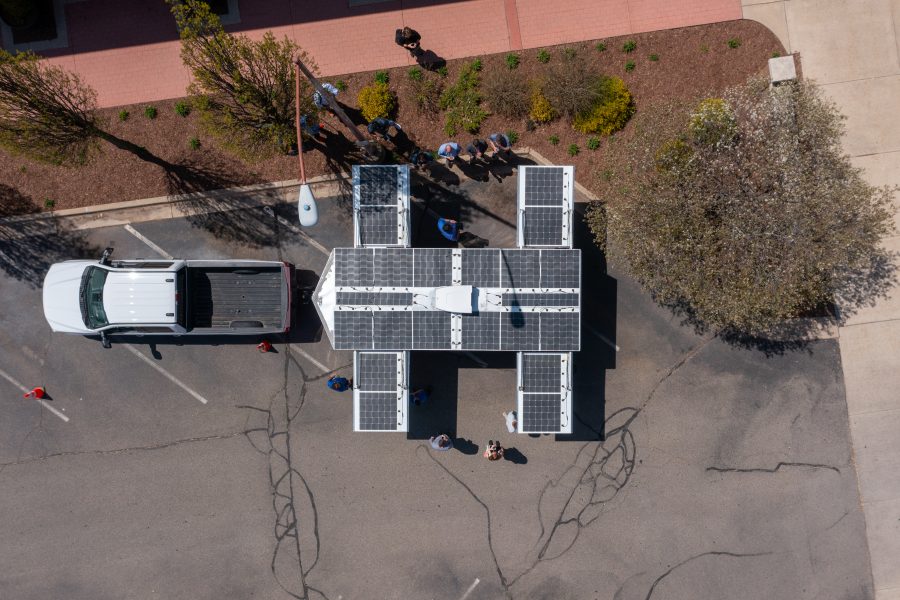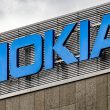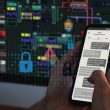Sesame Solar leverages mobile solar, hydrogen to power efforts beyond the grid
Michigan-based startup Sesame Solar recently launched the latest version of its easily deployable nanogrids that promise to deliver electric power indefinitely—without the need for diesel-powered generation—via complementary solar and hydrogen-fuel-cell technologies, according to company co-founder and CEO Lauren Flanagan.
“What we’re announcing is the world’s first 100% renewable, mobile emergency-response nanogrid,” Flanagan said during an interview with IWCE’s Urgent Communications.
While Flanagan is committed to developing solutions that help address climate-change issues, the new Sesame Solar mobile nanogrid also provides practical operational flexibility that is particularly valuable when the power grid is unavailable in remote areas or in the aftermath of disasters and large-scale emergency events. The nanogrid can be used to provide power for numerous use cases, including supporting deployable cell sites and the responders that rely on them.
“Diesel fuel isn’t always available after a hurricane—they can’t always get it out of the ground, and the roads aren’t always passable to bring the supply,” she said. “But if all you needed was sun and water to be running the communications, that’s exactly the kind of application we want.”
Designed to be towed by a pickup truck—Sesame Solar has ordered two electric vehicles that could be powered by the nanogrid—the latest Sesame Solar nanogrid features solar panels on the roof and on four automated side panels that can be deployed by a single person in 15 minutes, Flanagan said. If weather conditions prevent the solar panels from providing enough energy, the nanogrid can operate on power supplied by its integrated hydrogen fuel cell.
This fuel cell runs on hydrogen produced in the nanogrid through a filtration and electrolysis process, Flanagan said. By working together, the solar panels and the hydrogen fuel cell produce a “green energy loop” of continuous electricity without being dependent on outside fuel sources.
“What happens normally is that solar charges the batteries,” Flanagan said. “When the batteries discharged to, say, 35%, we toggle over to green hydrogen. What that means is that we start making the hydrogen—we’re actually splitting hydrogen and oxygen in water through electrolysis—and the oxygen is vented as a safe gas.
“The hydrogen is stored in solid-state tanks at low pressure, which makes it safe, and then it’s fueling a hydrogen fuel cell. That hydrogen fuel cell will also charge the batteries. So, the solar is powering the electrolysis, and the hydrogen fuel cell is recharging the batteries. When the batteries fully charged, then we turn the hydrogen off, and we go back to solar. You continue that loop, so that you never have to stop generating power.”
This approach provides many advantages when deployed—most notably, the ability for the nanogrid to be a standalone power source, without the need to be resupplied with diesel or fuel. This characteristic appealed to a branch of the U.S. military that has bought two of the new Sesame Solar mobile nanogrids, Flanagan said.
“We’re working with the Air Force—we’re building two of these green hydrogen nanogrids to be tested in their more rigorous DoD environment,” Flanagan said. “One is a medical nanogrid that can go around the base to deliver medical care, testing and vaccinations.
“The other is a security nanogrid that can go on rough dirt roads, like if an aircraft is down, and they’re on a rescue-and-recovery mission weeks at a time. Instead of having to bring in all of that diesel fuel, they’ll have solar and green hydrogen, so they can be energy independent for potentially weeks at a time—you just need sun and water.”
While the capabilities of hydrogen fuel cells has been known for years, two reasons why the technology has not been used widely by first responders has been the limited availability of hydrogen and safety concerns. Sesame Solar’s new nanogrid addresses both of these issues by processing the hydrogen from water within at the site.
“We can filter the water,” Flanagan said. “We do have on-board water tanks for seven days, but we can add more—an external tank or a water source—and filter it … We actually make the hydrogen with high purity onboard–that’s what the electrolysis does. That’s why this is the first solution like this that’s mobile. No one else that we are aware of has made [hydrogen] onboard, using electrolysis in a vehicle that can be towed from place to place and drives the fuel supply.”
“The actual hydrogen is at very high purity, and it’s also dried. That makes it into a very pure form—it’s like 99.9% pure—and then it goes into the fuel cell.”
In addition, the new nanogrid is designed to be deployed quickly easily upon reaching its destination, according to Flanagan.
“We try to make it very simple,” she said. “You literally pull a lever, push a button, and—open Sesame—the side walls deploy [maximizing the solar-panel surface]. You flip the power switch, and the batteries start to receive the solar power. They’re generally transported at about 30% charged, to make that safe, and the hydrogen is also at a low volume, to be safe, and then you produce more when you’re on site and need to use it.”
Sesame Solar has been manufacturing solar-powered nanogrids for some time that have been used by numerous high-profile entities including Comcast and Cox Communications. However, the dependence on solar power can be problematic when the environment is less than ideal, whether it is because of an extremely cloudy day or smoke-filled air near a wildfire, Flanagan said.
By incorporating the hydrogen fuel cell, the latest Sesame Solar nanogrid “gives you extra energy autonomy” and is more efficient, Flanagan said. Typically, the nanogrid can deliver 40-60 kilowatt hours of electricity per day, although the company customizes the nanogrid based on the use case, which can vary from a mobile dentist office with specialized equipment to a simple office/power station with a lot of charging outlets for the general public. Cost of the nanogrid typically is between $100,000 and $300,000, depending on the configuration, she said.
Flanagan believes one of the key use cases for the latest Sesame Solar nanogrid will be to support first responders in the field, providing them with needed power for displays, devices and communications.
“I can’t name names, but … we’re in early discussions with one of the big telcos for those kinds of solutions,” Flanagan said. “Instead of powering it with diesel, that could live inside our nanogrid, plus all of the other things, like the water filtration, having the mobile office and the export power for other functions.
“That’s definitely one of the big applications that we see. Sort of the ultimate customer—who isn’t a customer yet—would be FEMA. You would have our nanogrids on contract well ahead of wildfire, tornado, flood and hurricane season, deployed safely away from where the expected events are going to be but can be more quickly put in place, versus three days from a location in Atlanta.”

















